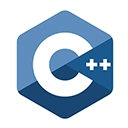C++17 and C++20 introduced several new features and improvements to the C++ programming language. These features enhance the expressiveness and power of C++, making it a more modern and developer-friendly language. In this guide, we'll explore some of the key features introduced in C++17 and C++20, along with explanations and sample code.
1. Features Introduced in C++17
C++17 introduced a variety of language and library features, including the following:
1.1. Structured Bindings
Structured bindings allow you to decompose tuples, arrays, and other data structures into individual variables, making it easier to work with structured data. Here's an example:
#include <iostream>
#include <tuple>
int main() {
std::tuple<int, std::string> person{30, "John"};
auto [age, name] = person;
std::cout << "Name: " << name << ", Age: " << age << std::endl;
return 0;
}
1.2. if constexpr
`if constexpr` is a new control structure that allows you to conditionally compile code based on compile-time conditions. It's particularly useful for enabling or disabling code based on template arguments. Here's an example:
#include <iostream>
template <typename T>
void processValue(const T& value) {
if constexpr (std::is_integral<T>::value) {
std::cout << "Integral value: " << value << std::endl;
} else {
std::cout << "Non-Integral value" << std::endl;
}
}
int main() {
processValue(42); // Integral value
processValue("Hello"); // Non-Integral value
return 0;
}
2. Features Introduced in C++20
C++20 brought numerous enhancements to the language, including the following:
2.1. Concepts
Concepts allow you to define constraints on template parameters, making template code more expressive and error messages more understandable. Here's an example:
#include <iostream>
template <typename T>
concept Integral = std::is_integral<T>::value;
template <Integral T>
T add(T a, T b) {
return a + b;
}
int main() {
std::cout << add(5, 7) << std::endl;
// This will not compile because "Hello" is not integral.
// std::cout << add("Hello", "World") << std::endl;
return 0;
}
2.2. Ranges
The ranges library introduces new algorithms and range adaptors for working with sequences of elements. It simplifies code and improves readability. Here's an example:
#include <iostream>
#include <vector>
#include <algorithm>>
#include <ranges>
int main() {
std::vector<int> numbers = {1, 2, 3, 4, 5};
// Use ranges to filter and transform elements
auto result = numbers | std::views::filter([](int n) { return n % 2 == 0; })
| std::views::transform([](int n) { return n * 2; });
for (int num : result) {
std::cout << num << " ";
}
return 0;
}
3. Conclusion
C++17 and C++20 introduced significant improvements to the C++ language, enhancing its expressiveness, readability, and usability. By taking advantage of these new features, C++ developers can write more modern and efficient code.

